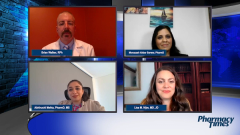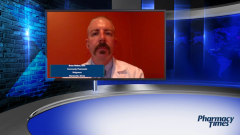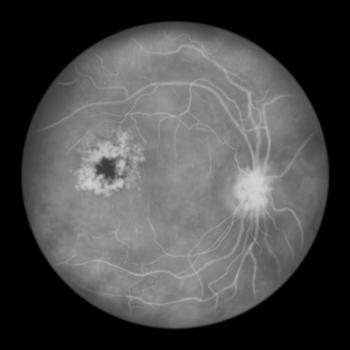
Over-the-Counter Treatment Options for DED: Continued
Monazzah Akbar Sarwar, PharmD, continues the conversation for over-the-counter treatment options for patients with dry eye disease.
Episodes in this series

Monazzah Akbar Sarwar, PharmD: The good news is there are a lot of over-the-counter options available to patients for dry eye treatment. It can get very overwhelming. As you were listing all the ocular lubricants, I was thinking about when I talk to patients, one of the things I do—I keep one in my pocket—is show them. “If you’re getting a box that has a preservative, it comes as a bottle and is going to look something like this—maybe a different shape or size—and if it’s preservative-free, you’re going to get little ampules or packages that look like this.” This helps me talk it through with them. “This is preservative-free; it’s single use because you have to snap this off and use it as a single-use item,” kind of like what you were saying, Brian.
With the preserved products, I also try to get an idea of how long the patient is using it for, if it is for a mild case, because then I’m concerned about what it is preserved with. It’s most likely benzalkonium chloride, or BAK, and for short-term use, that won’t be an issue. If it is for chronic use, we know that BAK can be somewhat toxic to the surface of the eye because it does break down that corneal epithelium, and that will increase the permeability of the cornea. It changes that ocular surface and the epithelial cells, which becomes a concern to us. For long-term use, the good news is there are a lot of alternative preservatives on the market, like oxidizing agents, such as sodium perborate. You find that in things like GenTeal and TheraTears; chelating agents like EDTA [ethylenediaminetetraacetic acid]; oil-based products, like Soothe and Systane, which help to ensure that moisture is retained in the eye; and a lot of other oil-based products. Another thing I do is ask about surgeries because if someone has had a surgery like LASIK, for example, I try to avoid the oil-based products right away because there is a healing process they’re going through, so we try to wait. The preservative-free products are great for addressing patient allergies and any toxicity concerns we may have.
Gels and ointments are thicker; they offer more intensive lubrication than eye drops do, and there’s an extended contact time, so they stay longer in the eye. A counseling point that I always like to bring up with patients when we’re talking about solutions and gels and ointments is, sequence and timing. In what order are you going to put these drops in? Solutions go first. With a suspension, I always tell them this is milky. The medication settles at the bottom, so you have to shake it very well before you use it. Those go second, and gels and ointments go last. Then we talk about timing. When your solutions go first, you have to wait a minimum of 5 minutes. After your suspensions, wait a minimum of 10 minutes before instilling something else. After any gels and ointments, wait a minimum of 30 minutes. Counseling on blurry vision is another important point.
To get the best use out of the medication, [I talk about] gentle eyelid closure. Once you instill that drop, make sure you gently close your eyes. Then [there is] punctal occlusion for solutions and suspensions so the drop stays local in the eye because that will help to decrease any of those systemic and topical [adverse] effects we’re concerned about. It increases the bioavailability of the product and possibly decreases the frequency that the patient has to use drops because they’re getting the best use out of it locally in the eye. Getting that patient engaged and going through these points is an approach that pharmacists take and is crucial and critical when they’re having that one-on-one with a patient.
Transcript edited for clarity.
Newsletter
Stay informed on drug updates, treatment guidelines, and pharmacy practice trends—subscribe to Pharmacy Times for weekly clinical insights.














































































































































































































